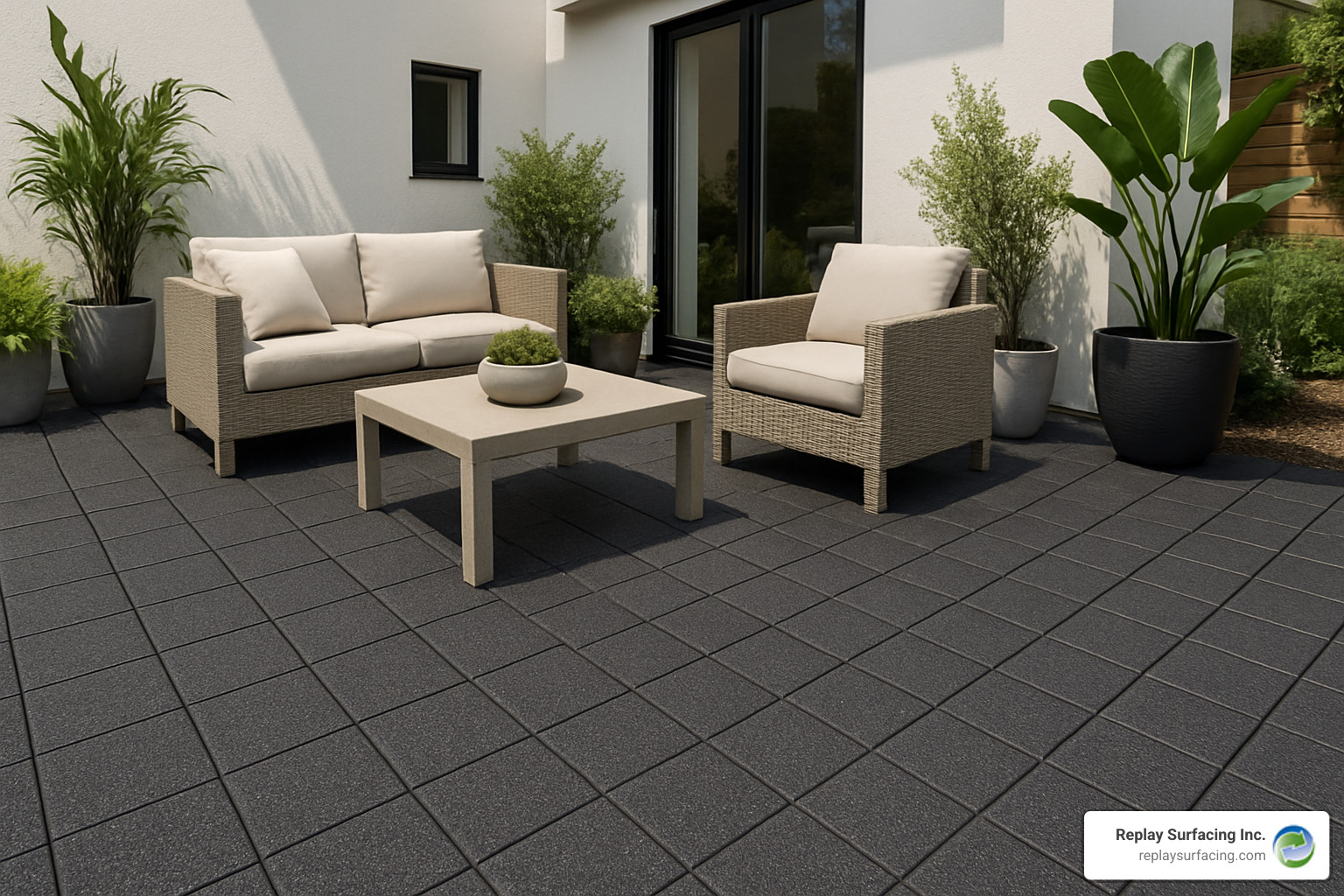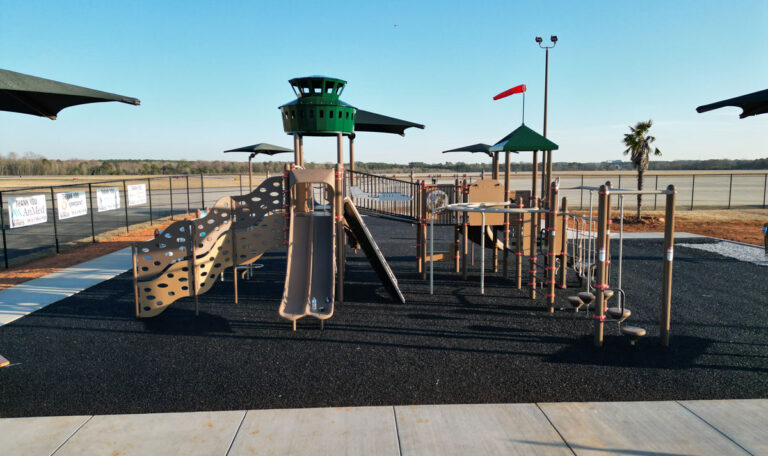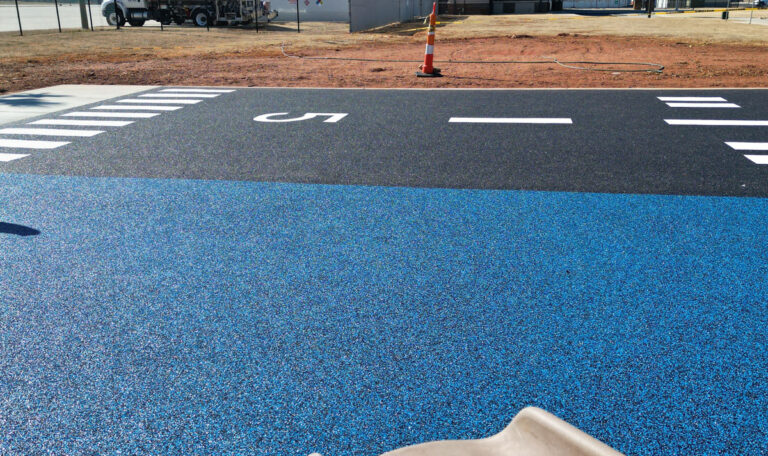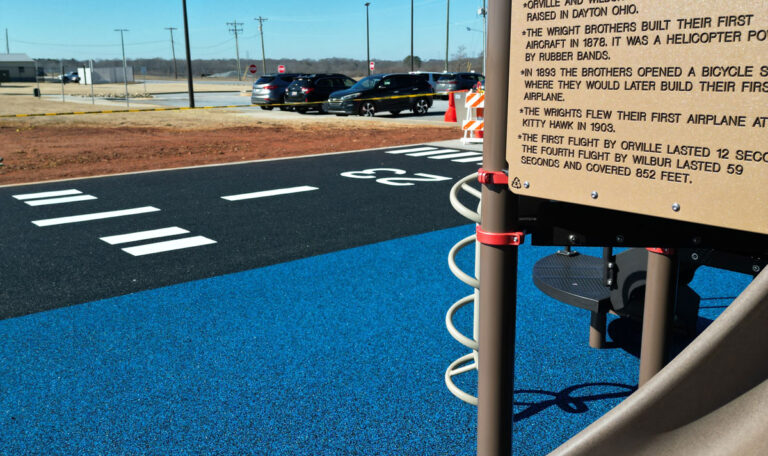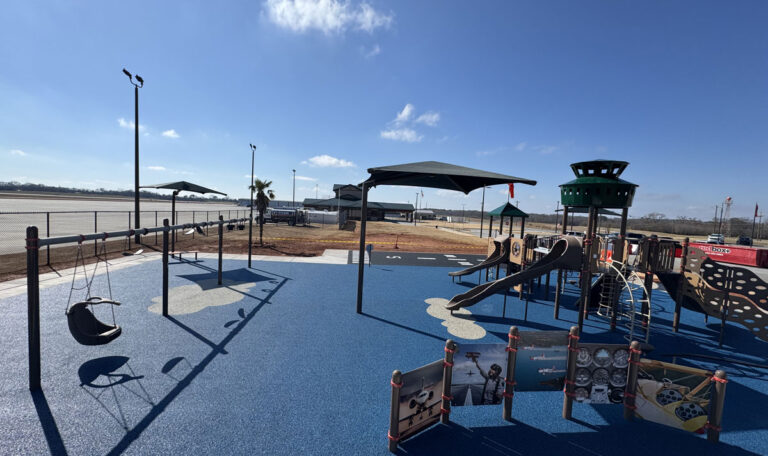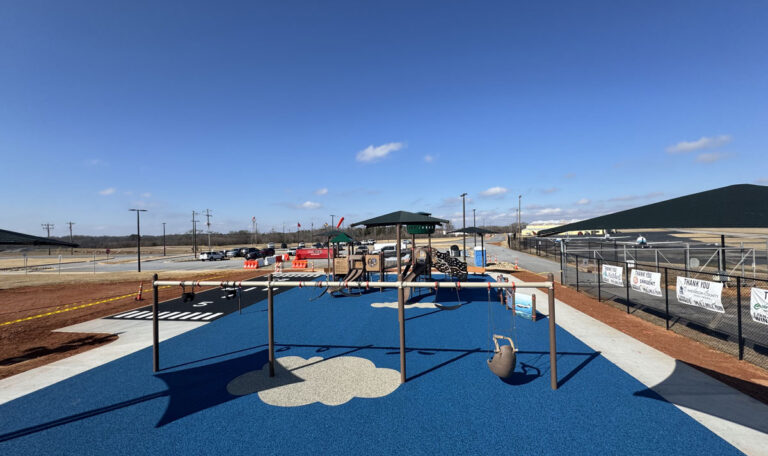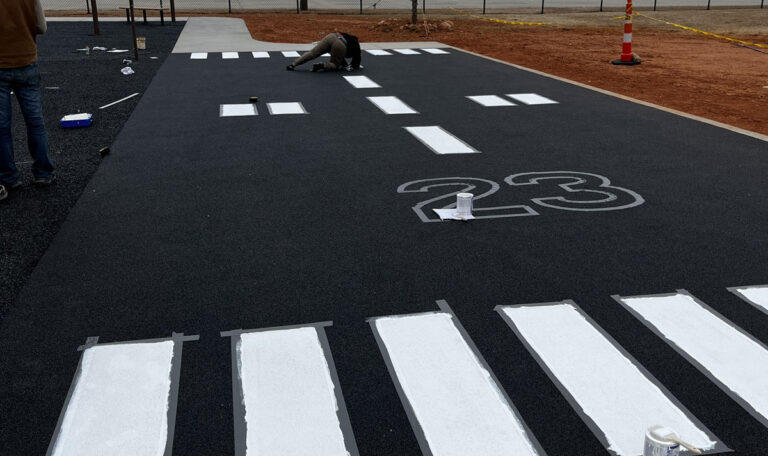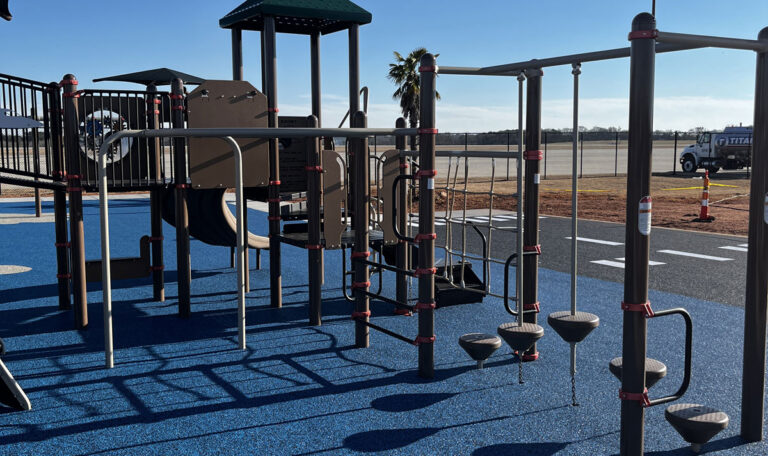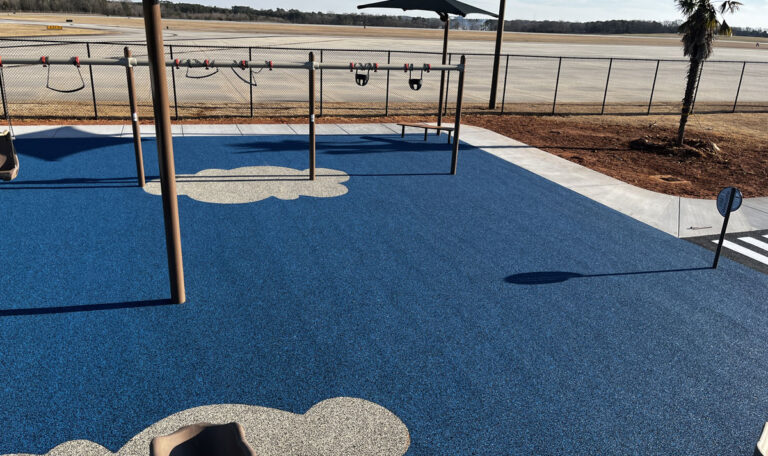Why Rubber Decking is Changing Modern Outdoor Spaces
Rubber decking is a versatile, poured-in-place or tile-based surfacing solution made from recycled rubber materials that provides superior safety, durability, and weather resistance compared to traditional wood, concrete, or composite decking options.
Key Benefits of Rubber Decking:
- Slip-resistant surface – remains safe even when wet
- Heat-resistant – stays cool to the touch under direct sunlight
- Weather-proof – resists cracking, fading, and moisture damage
- Low maintenance – no sealing, staining, or regular repairs needed
- Customizable – available in multiple colors, patterns, and designs
- Eco-friendly – made from recycled tire materials
- Long-lasting – 10-15 year lifespan with minimal upkeep
Traditional decking materials create ongoing headaches. Wood requires constant sealing and staining, splinters easily, and becomes dangerously slippery when wet. Concrete cracks under temperature changes and gets scorching hot in summer sun. Both options demand expensive maintenance and frequent repairs.
Modern rubber decking eliminates these problems entirely. The flexible surface absorbs impact, won’t crack or splinter, and maintains excellent traction even in wet conditions. Unlike wood that needs yearly maintenance or concrete that requires costly crack repairs, rubber decking delivers worry-free performance for over a decade.
Safety stands as the biggest advantage. Rubber decking’s naturally slip-resistant texture prevents falls around pools and wet areas. The cushioned surface also reduces injury risk from slips and falls – especially important for children and elderly users.
As Landon Olson, mechanical engineer and operator of Replay Surfacing, I’ve seen how rubber decking transforms outdoor spaces while solving the persistent maintenance issues that frustrate facility managers. My experience in manufacturing and sustainability has shown me that recycled rubber surfacing delivers the perfect balance of safety, durability, and environmental responsibility that modern projects demand.
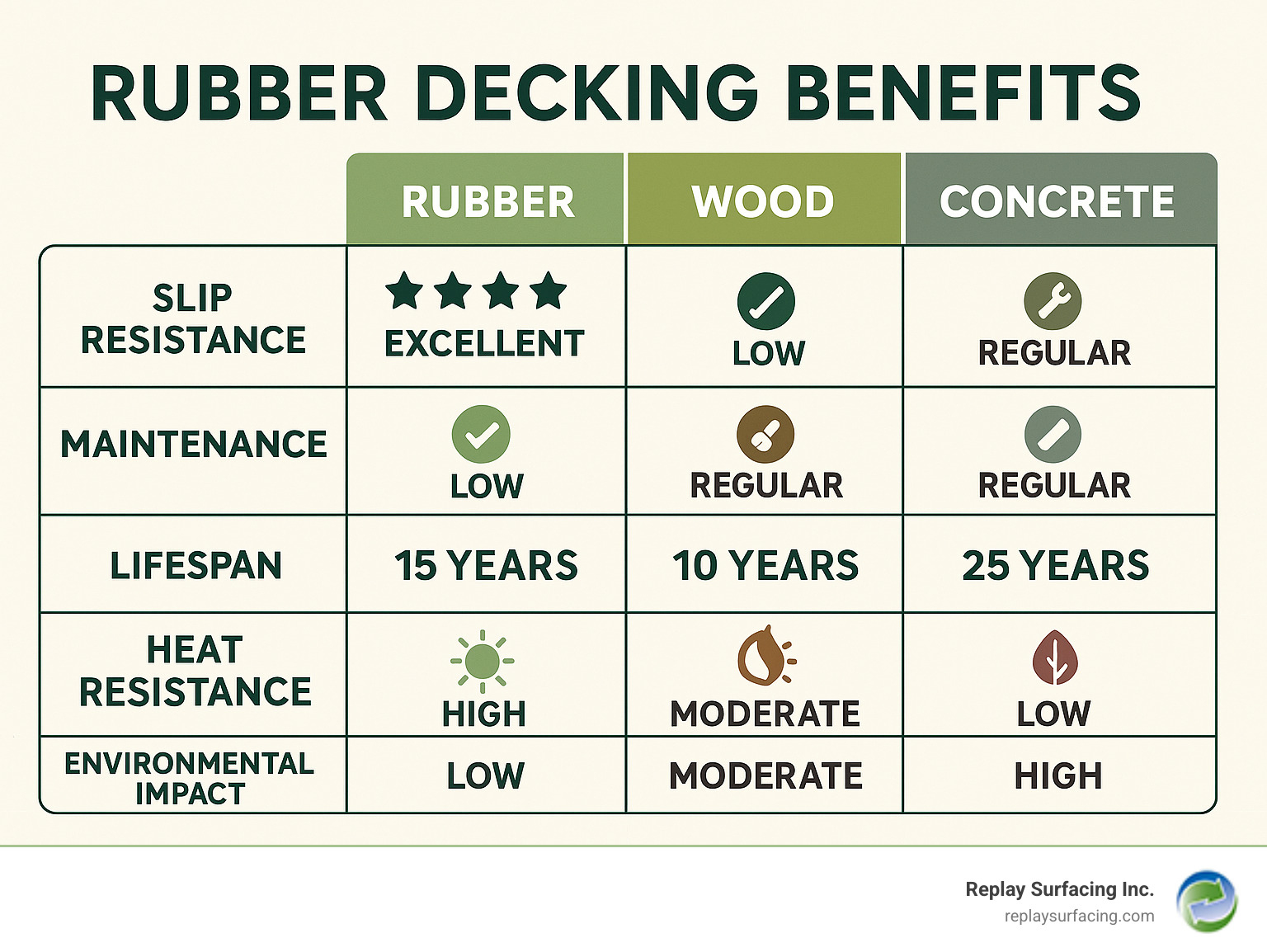
Find more about rubber decking:
What is Rubber Decking and Why is it a Superior Choice?
Rubber decking turns hard, slippery outdoor floors into soft, secure surfaces. We create it by blending recycled rubber granules with a tough polyurethane binder, then pouring or installing it as tiles to form a seamless, resilient layer that bonds to almost any stable base.
Typical applications include:
- Patios and balconies that stay comfortable for bare feet
- Pool surrounds that remain cool and slip-resistant
- Walkways and boat decks that shrug off heavy traffic, salt, and water
- Playgrounds that need extra impact protection
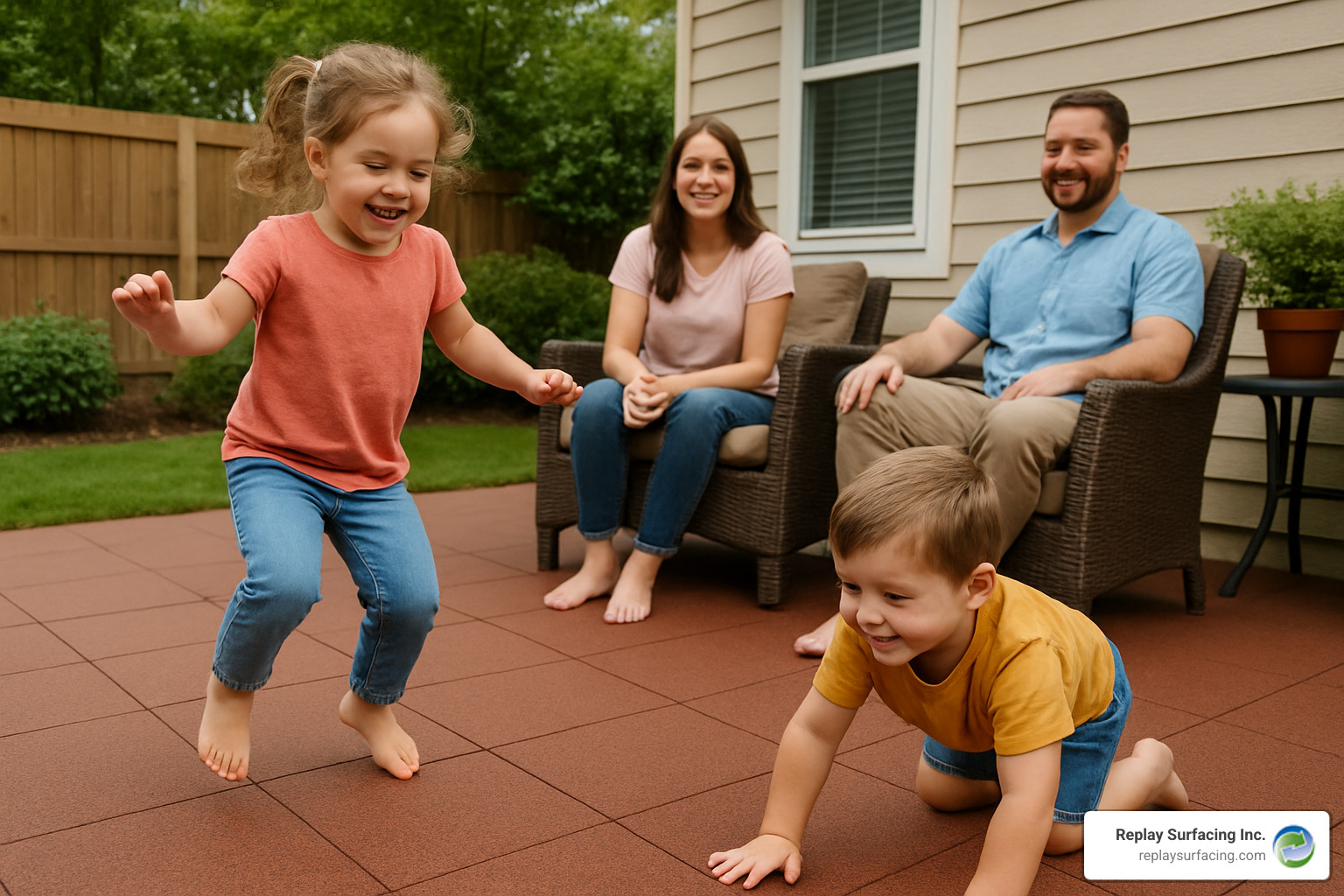
Unlike rigid materials that jar your joints with every step, rubber decking provides welcome shock absorption and flexes with seasonal temperature swings instead of cracking or splintering.
Benefits Over Wood and Concrete
| Factor | Rubber Decking | Wood | Concrete |
|---|---|---|---|
| Safety (Slip-Resistance) | Excellent – maintains traction when wet | Poor – very slippery when wet | Fair – can be slippery |
| Durability (Cracking/Splintering) | Flexible, won’t crack or splinter | Splinters, warps, rots | Cracks with temperature changes |
| Maintenance (Sealing/Staining) | Minimal – occasional cleaning | High – yearly sealing/staining | Moderate – crack repairs |
| Comfort (Heat/Hardness) | Stays cool, cushioned feel | Can get hot, hard | Extremely hot, very hard |
| Lifespan | 10-15 years | 5-10 years with upkeep | 15-20 years with repairs |
The numbers tell the story, but day-to-day use makes the difference clearer. Rubber decking keeps feet steady in splash zones, absorbs the sting of accidental falls, never raises a splinter, and shrugs off UV rays, pool chemicals, and freeze-thaw cycles with almost no maintenance.
Still deciding? The Importance Of Having An Anti-Slip Rubber Surface For Pools And Patios outlines why safer, cooler surfaces around water matter so much for families and facility managers alike.
Exploring the Types and Styles of Rubber Decking
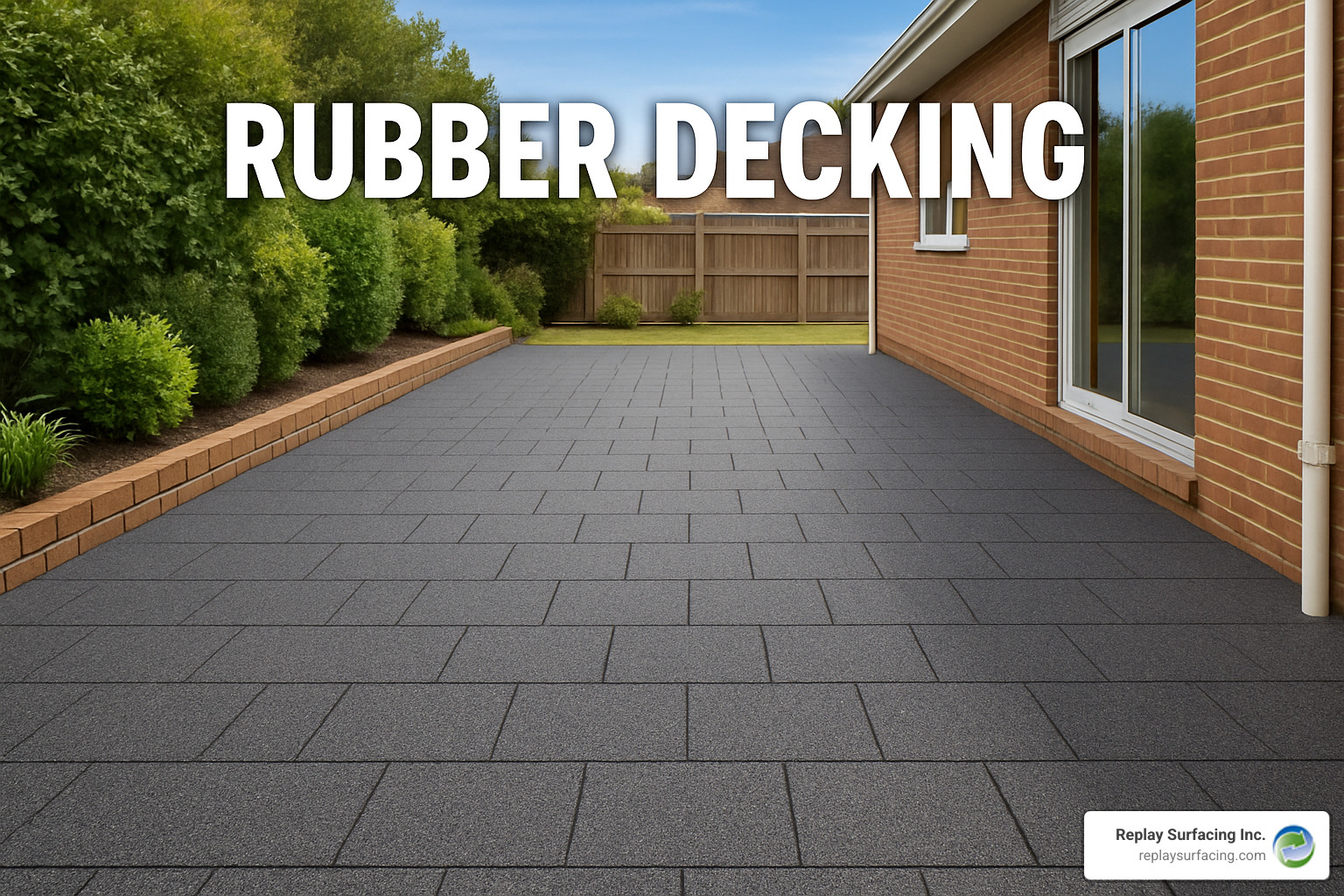
Modern rubber decking is incredibly versatile because the same EPDM granules that give it strength can be mixed in virtually any color and installed in several different forms.
Common Material Options
- Poured-in-place rubber – the gold standard for durability and unlimited design freedom. Our Poured In Place Rubber Pool Deck system is troweled on-site in two layers for a seamless finish.
- Interlocking rubber tiles – perfect for DIYers or temporary spaces. Snap them together over a weekend using our Outdoor Interlocking Rubber Pathway Materials 24 X 24 Inches.
- Rubber pavers – offer the classic look of masonry with the comfort of rubber.
- Rolled rubber sheets – a fast, economical way to cover long walkways such as our Recycled Rubber Walkway 3 Feet Wide.
- Liquid rubber coatings – thin, brush-on formulas like our Rubberized Deck Coating revive sound concrete or wood without adding thickness.
Colors, Patterns, and Personalization
Because EPDM color granules are UV-stable, your deck can be subtle earth tones, bold primaries, or a custom blend that ties perfectly into the surrounding architecture. Our Custom Color Pool Decks gallery shows how logos, borders, and geometric inserts can turn ordinary surfaces into brand statements or backyard centerpieces.
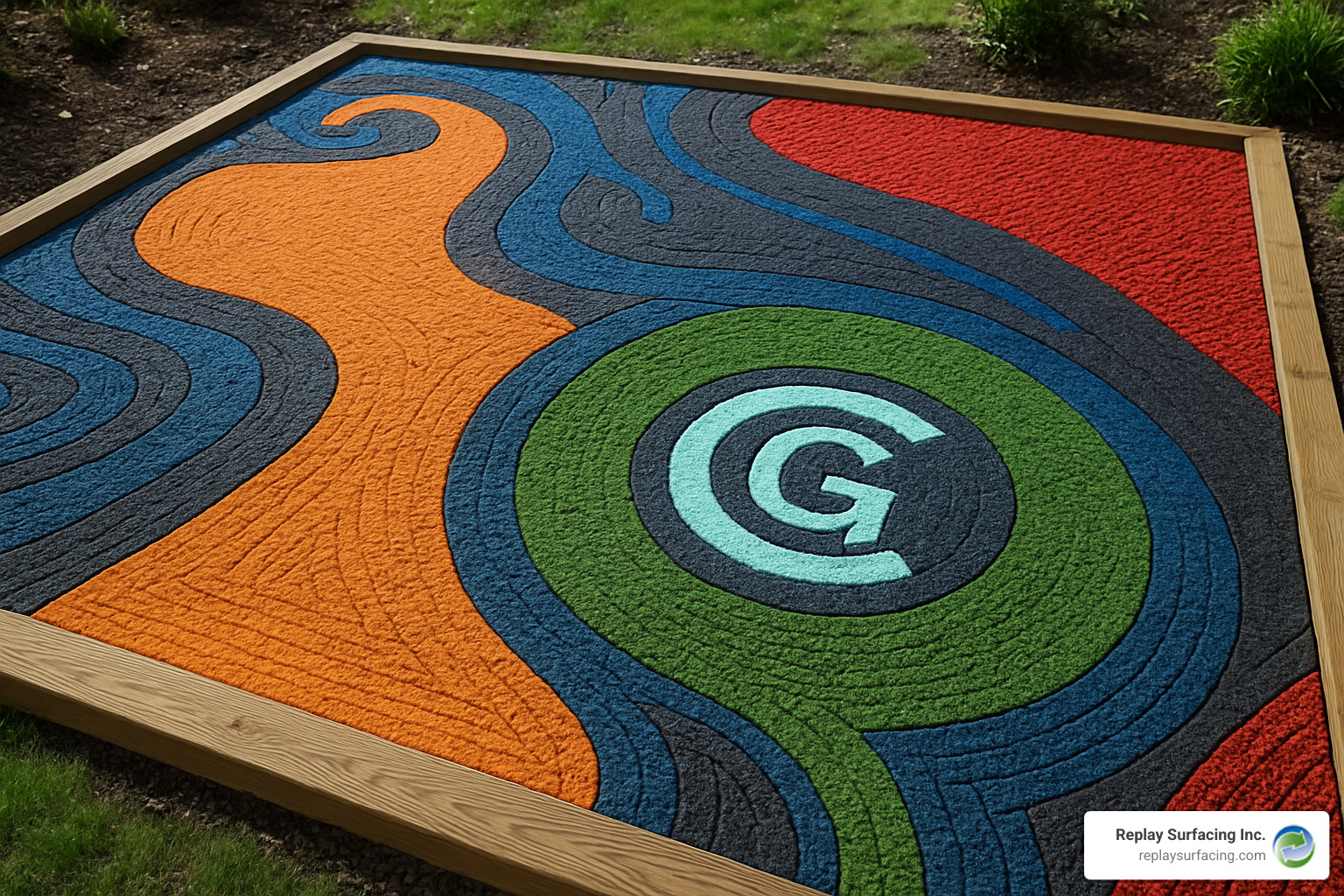
Whether you need school colors around a splash pad or a muted palette that blends into a wooded lot, rubber decking gives you design control without sacrificing performance.
Installation, Maintenance, and Lifespan
Most residential rubber-deck projects finish in a single day, weather permitting. After installation you’ll wait 48–72 hours before foot traffic, with full cure reached in roughly a week.
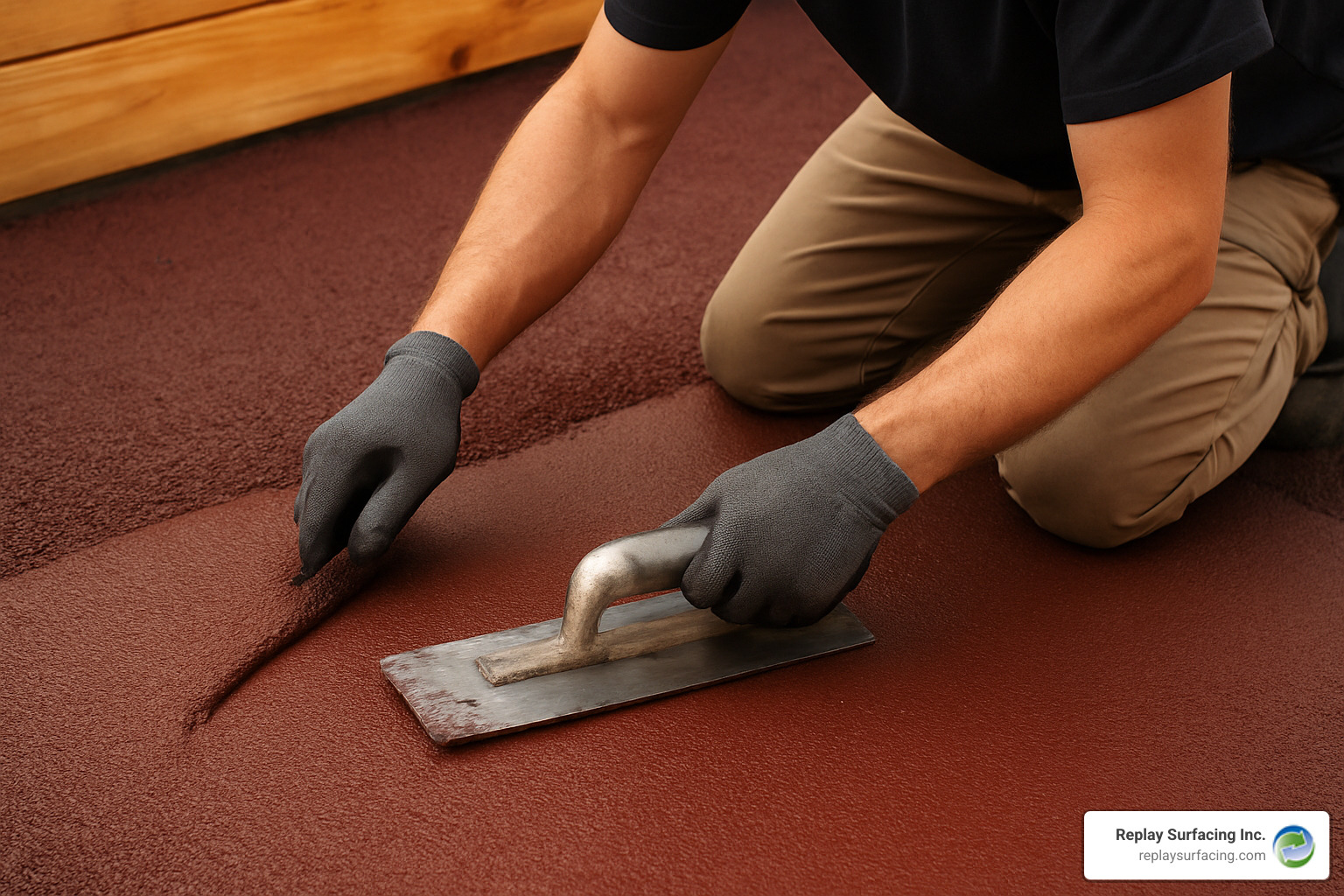
DIY vs. Professional Installation
Interlocking tiles lend themselves to weekend DIY jobs—measure, prepare the base, and click the tiles together. By contrast, poured-in-place systems demand precise mixing, temperature control, and specialized trowels, so we recommend using our certified Rubber Paving Company crew for flawless results.
Minimal Maintenance
Rubber decking’s care list is short: sweep debris away and hose or lightly power-wash when needed. Because the surface is non-porous, most spills lift with mild soap and water, and—best of all—there is no annual sealing or staining. If heavy use eventually dulls the finish, Rubber Pool Deck Resurfacing can refresh the top layer instead of replacing the entire deck.
Expected Lifespan
With quality materials and proper installation you can expect 10–15 years of service, even in regions that see freezing winters, blazing summers, or heavy foot traffic. Factor in the near-zero maintenance and the total cost of ownership often beats traditional decking by a comfortable margin.
Cost, Warranties, and Environmental Impact
Investing in rubber decking requires a higher upfront cost than traditional materials, but the financial benefits become clear over time. While wood decking might seem cheaper initially, the constant maintenance, repairs, and eventual replacement make rubber decking the smarter long-term choice.
The eco-friendly nature of rubber decking appeals to homeowners who want beautiful outdoor spaces without harming the environment. Every square foot of rubber decking gives new life to old tires that would otherwise sit in landfills for decades.
Green building programs recognize rubber surfacing as a sustainable solution. If you’re pursuing LEED certification, rubber decking can help you earn valuable credits while creating a surface that actually performs better than traditional alternatives.
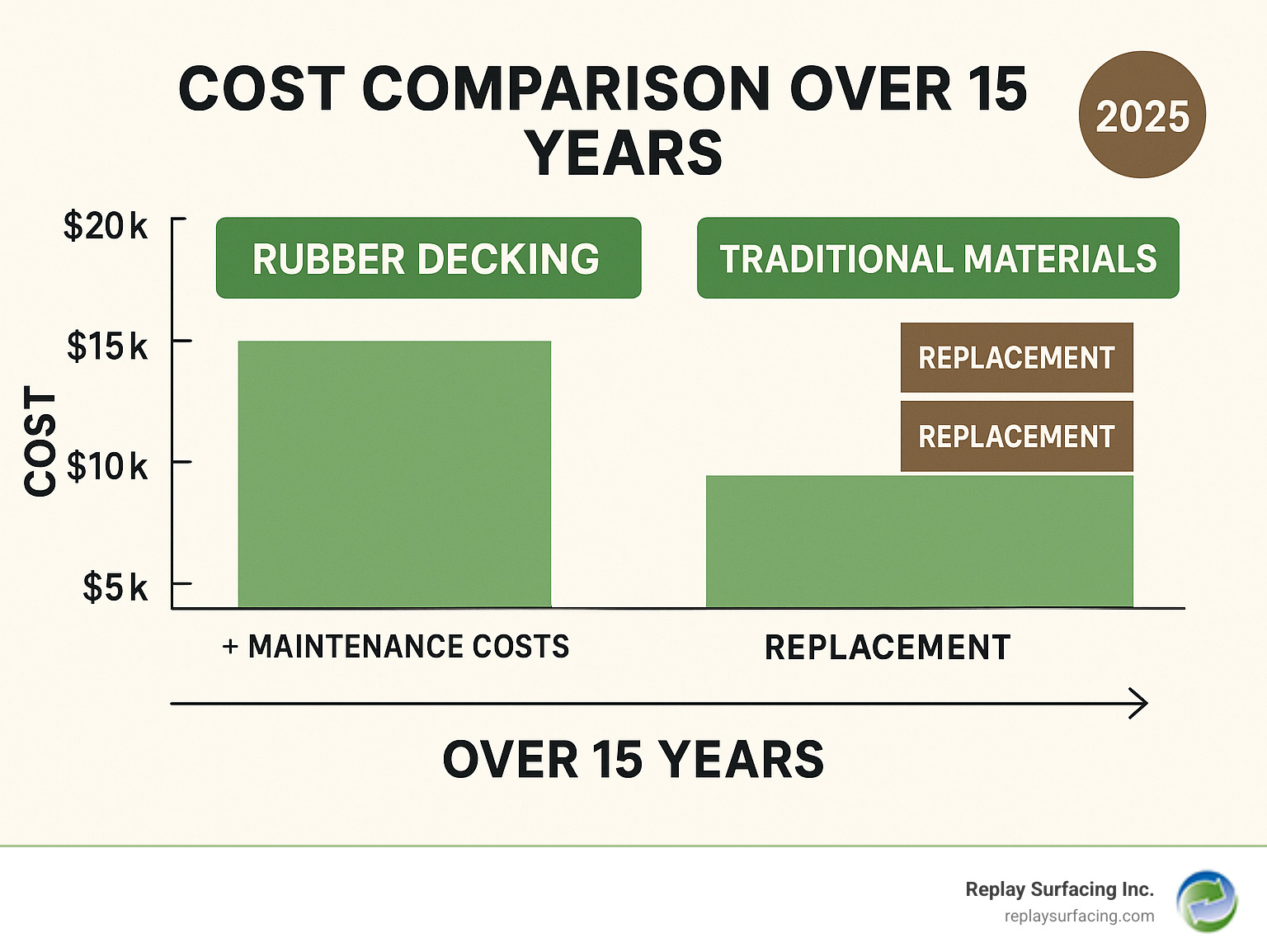
Understanding the Cost of Rubber Decking
Professional rubber decking installation typically costs $10-$16 per square foot for projects over 1,000 square feet. This pricing reflects the premium materials and specialized installation that deliver decades of worry-free performance.
Several factors influence your final project cost. Surface type makes the biggest difference – poured-in-place systems cost more than interlocking tiles but provide superior durability and seamless appearance. Project size works in your favor, as larger installations achieve better per-square-foot pricing through economies of scale.
Design complexity adds to the cost but creates stunning results. Multiple colors, custom patterns, and logo integration require additional materials and installation time. Site conditions like difficult access or extensive surface preparation can increase labor costs, while your geographic location affects both material shipping and local labor rates.
For detailed pricing specific to your project, visit our Rubber Pool Deck Cost page where you’ll find comprehensive cost breakdowns and factors that influence your investment.
The long-term savings make rubber decking incredibly attractive. You’ll eliminate the annual sealing and staining costs that wood decking demands. No crack repairs or surface replacement for 10-15 years means your initial investment pays dividends year after year.
Property owners often find that rubber decking costs less than traditional materials when you calculate total ownership over 15 years. The maintenance savings alone can offset the higher initial cost, while the safety benefits may reduce insurance claims from slip-and-fall accidents.
Warranties and Peace of Mind
Quality rubber decking comes with comprehensive warranty protection that gives you confidence in your investment. Manufacturer warranties typically cover material defects and premature failure for 3-5 years, protecting against manufacturing issues, excessive color fading, and structural problems under normal use.
Installer guarantees provide additional protection for workmanship issues. Reputable contractors like Replay Surfacing stand behind their installation work and will address any problems that arise from improper installation techniques or surface preparation.
Material defect coverage includes premature wear or degradation, color fading beyond normal expectations, adhesion failures, and structural integrity issues. This protection ensures your surface performs as expected throughout its lifespan.
Workmanship coverage addresses installation errors, improper surface preparation, mixing or application mistakes, and finishing defects. These guarantees mean you won’t pay twice for the same work if installation issues arise.
When selecting your contractor, always ask about warranty coverage and get everything in writing. Understanding what is and isn’t covered protects your investment and gives you peace of mind for years to come.
The Eco-Friendly Advantage
Recycled tires form the foundation of most rubber decking systems, giving new life to materials that would otherwise create environmental problems. Each installation diverts hundreds of tires from landfills, where they create fire hazards, collect water that breeds mosquitoes, and take up valuable space for decades.
This landfill diversion provides immediate environmental benefits while creating a superior surface for your outdoor space. The recycled tire content doesn’t compromise performance – it actually improves durability and safety compared to traditional materials.
Sustainable surfacing extends beyond just using recycled materials. The 10-15 year lifespan of rubber decking means fewer replacement cycles, reducing the environmental impact of manufacturing and transportation over time. Compare this to wood decking that needs replacement every 5-10 years, and the environmental advantage becomes clear.
For comprehensive information about environmental benefits and considerations, see The Pros And Cons And Recycled Rubber Walkways.
LEED credits available for rubber decking projects include points for recycled content (up to 2 points for using recycled materials), heat island reduction (lighter colors reflect solar heat), stormwater management (porous systems allow water infiltration), and innovation in design for creative applications of sustainable materials.
The reduced carbon footprint comes from changing existing waste materials rather than manufacturing new products from raw materials. Shorter transportation distances for recycled materials and the elimination of frequent replacement cycles further reduce environmental impact.
At Replay Surfacing, we’re proud to transform environmental hazards into beautiful, functional surfaces that improve your outdoor living while protecting our planet for future generations.
Frequently Asked Questions about Rubber Decking
Is rubber decking a good choice for pool areas?
Rubber decking absolutely shines in pool environments – it’s honestly one of the best applications for this material. The naturally slip-resistant surface maintains excellent traction even when soaking wet, which means fewer worried moments watching kids run around the pool deck.
The heat-resistant properties solve that age-old problem of scorching hot concrete that sends everyone hopping across the deck like they’re walking on coals. Rubber decking stays cool to the touch even during those blazing summer afternoons when concrete becomes unbearable.
What really sets rubber decking apart is its seamless surface. No more dealing with grout lines that collect algae or expansion joints that trap debris. This creates a much more hygienic environment around your pool and makes cleaning a breeze.
The chemical resistant nature means pool chemicals, sunscreen, and those inevitable spills won’t damage or permanently stain your deck. The non-porous surface simply doesn’t absorb these materials like concrete or wood would.
For detailed information about pool-specific benefits, check out our Non-Slip Pool Deck Surfaces page.
Does rubber decking get hot in the sun?
Here’s the good news: rubber decking stays cooler than concrete and most traditional materials, though it will warm up in direct sunlight like any surface. The key difference is that rubber doesn’t hold onto heat like a stubborn grudge the way concrete does.
Lighter colors reflect heat much better and stay noticeably cooler than darker options. When we’re planning your installation, we’ll often recommend lighter color choices for those areas that get hammered by afternoon sun.
The beauty of rubber’s thermal properties is how quickly it cools down once shade appears or temperatures drop. Concrete can stay hot well into the evening, but rubber decking becomes comfortable for bare feet much faster.
For areas with intense sun exposure, lighter colors work best, and you might consider adding shade structures or choosing textured surfaces that create cooling air pockets.
Can rubber decking be installed over an existing deck?
Yes, and this is actually one of our favorite solutions because it saves you money and hassle! Rubber decking works as an excellent overlay for existing surfaces in good structural condition, eliminating the need for expensive demolition.
Concrete makes the ideal substrate and is our most common application. Wood decks work well too, as long as they’re structurally sound and properly prepared. We can even install over tile if it’s well-adhered and level, or over existing rubber surfaces for resurfacing projects.
The critical factor is having a sound sub-surface that won’t shift or deteriorate. Our installation team always evaluates existing conditions and recommends any necessary prep work to ensure long-lasting results.
For concrete-specific applications, our Rubber Coating For Concrete Pool Decks page has all the details you need.
The cost savings from overlay installation include eliminated demolition costs, reduced disposal fees, faster installation, and much less disruption to your outdoor space. The process involves cleaning and preparing the existing surface, making any necessary repairs, applying primer when needed, installing the rubber system, and finishing with proper curing time.
Conclusion: Is Rubber Decking Right for You?
After exploring all the benefits and considerations, rubber decking emerges as a smart choice for property owners who value safety, durability, and peace of mind. The combination of features makes it particularly attractive for families with children, commercial properties with liability concerns, and anyone tired of constant deck maintenance.
The safety benefits alone make rubber decking worth considering. When you eliminate slip hazards around pools, reduce impact injuries from falls, and remove splinter risks entirely, you create an environment where everyone can relax and enjoy outdoor spaces without worry. For families with young children or elderly relatives, this safety advantage often justifies the entire investment.
Durability advantages mean you can stop worrying about yearly deck maintenance projects. While your neighbors spend weekends staining wood or repairing concrete cracks, you’ll be enjoying your outdoor space. The 10-15 year lifespan with minimal upkeep translates to real time and money savings over the years.
The low maintenance aspect particularly appeals to busy property owners. A quick sweep and occasional power washing keep your deck looking great – no more scheduling annual sealing projects or dealing with splinter repairs. This simplicity makes rubber decking especially attractive for commercial properties where maintenance costs add up quickly.
Customization possibilities ensure your deck reflects your personal style or brand identity. Whether you prefer subtle earth tones that blend with natural surroundings or bold colors that make a statement, the design flexibility accommodates any vision. The ability to incorporate logos or patterns adds unique value for commercial applications.
The eco-friendly advantage provides environmental benefits that feel good while delivering practical performance. By choosing recycled rubber surfacing, you’re diverting waste tires from landfills while creating surfaces that last longer than traditional alternatives. This sustainability aspect aligns with modern values while solving real problems.
At Replay Surfacing, we’ve seen how rubber decking transforms outdoor spaces across Charlotte NC, Columbia SC, Raleigh NC, Sanford NC, Tucson AZ, Connecticut, Indiana, Nashville TN, Beaverton OR, and Lake Charles Louisiana. Our experience changing recycled materials into high-performance surfaces has shown us that rubber decking consistently delivers superior results compared to traditional alternatives.
Whether you’re planning a residential pool deck, commercial walkway, or recreational facility surface, rubber decking provides the versatile solution that meets your safety, durability, and aesthetic requirements while supporting environmental sustainability. The investment pays dividends through reduced maintenance, improved safety, and improved property value.
Learn more about how Replay Surfacing can revolutionize your patios, pools, decks, and walkways and find why property owners across the country are choosing rubber decking for their most important projects.

